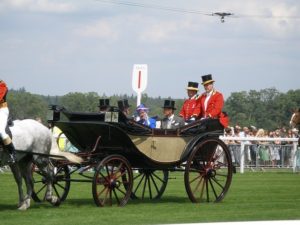Why was Royal Ascot postponed in 1955?
On May 28, 1955, the Associated Society of Locomotive Engineers and Firemen (ASLEF) called a national rail strike, which would not be called off until June 14, when pay rises were awarded. On May 31, following a meeting of the Privy Council at Balmoral Castle, the Queen declared a state of emergency, with emergency regulations coming into force the following day.
As a result of the unrest, Trooping the Colour – which celebrates the ‘official’ birthday of the Sovereign, on the second Saturday in June – was cancelled altogether and, for the first time in living memory, Royal Ascot was postponed until mid-July. The meeting was scheduled for Tuesday to Friday, as usual, but with a different running order, to allow horses that ran in the King Edward VII Stakes or Hardwicke Stakes on the Tuesday to also run in the King George VI and Queen Elizabeth Stakes on the following Saturday, if so desired.
Unfortunately, one of the consequences of moving the Royal Meeting from its traditional slot in the calendar was that the opening day, July 12, was the hottest day of the year. After two days of extreme heat, described by racegoers as ‘insufferable’, on July 14 Ascot Racecourse was struck by a violent thunderstorm, bringing lightning and torrential local rainfall. Tragedy struck when lightning went to ground through metal rails close to a refreshment tent opposite the Royal Enclosure. Dozens of people were injured, two fatally, and racing was abandoned after the fourth race.
 Royal Ascot is, of course, a highlight of the British sporting and social calendar. Remarkably, though, as recently as 1999, the Royal Meeting featured just three highest category, Group One races. Those races were the St. James’s Palace Stakes, Gold Cup and Coronation Stakes.
Royal Ascot is, of course, a highlight of the British sporting and social calendar. Remarkably, though, as recently as 1999, the Royal Meeting featured just three highest category, Group One races. Those races were the St. James’s Palace Stakes, Gold Cup and Coronation Stakes.